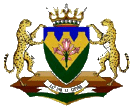
This page is part of © FOTW Flags Of The World website
Dictionary of Vexillology: Appendix III
Tinctures
Last modified: 2025-06-27 by martin karner
Keywords: vexillological terms |
Links: FOTW homepage |
search |
disclaimer and copyright |
write us |
mirrors
In vexillology there is only one definition per colour
but in practice various different shades will be encountered for the primary tinctures
and these are used at the discretion of the designer. They can range from very dark
or deep to very light or pale shades. The different shades might also have typical
names, but to avoid confusion they should preferably be designated in terms of a
standard colour code (see also
'international colour code').
- Proper
- The term used in heraldry when a charge or figure is shown in its natural shape and
colours, as opposed to those that are stylised, with the tinctures sometimes given as
Terry – the colour of earth, Aqua – the colour of water, Carnation – the colour of flesh
and/or cendrée – ashen grey.

Arms of Free State Province, South Africa
- Enamels
- A term that does not generally appear in English heraldry, but which is sometimes
used to describe the basic heraldic colours when not referring to metals, mixed tinctures
and/or furs – but see ‘colour 1)’
and ‘tincture’ below.





From left: Gules, Azure, Vert, Purpure and Sable
- Tinctures
-
The term used to describe those colours (including metals, mixed tinctures, and furs)
that are used in heraldic blazoning, and which are sometimes seen in vexillology: these are
(with names derived from Norman-French) Gules – red. Azure – blue, Vert – green, Purpure –
purple, Sable – black, Brunatre – brown, Tenne – orange, Or – gold/yellow and Argent –
silver/white – see enamels, metals, mixed tincture.
"proper" and "shades of tinctures" in Appendix III (also colour 1)).
Plus the furs Ermine, Potent and Vair – see "furs" in Appendix III (also "hatching 1)"
in the main text).












Please note that there are a number of variations not covered above, and we suggest that a
suitable glossary or dictionary of heraldry be consulted if further details are required.
- Mixed Tinctures
- There are also two mixed tinctures – sometimes called auxiliary colours – which are not
encountered as often as
the primaries. They are orange (or tenne), a mixture of red and the metal yellow;
and brown (or brunatre), a mixture of red and blue – see ‘tinctures’.


- Shades of Tincture
- English heraldry, generally speaking, recognizes only one shade per colour, however,
in practice and in Continental European heraldry, various different shades will be
encountered for the primary tinctures. For example: Gules may be divided into Murrey or
Amaranth (dark red) or Sanguine (blood red), whilst Azure could also appear as Bleu Celeste
(sky blue) – see
‘tinctures’ in ‘appendix III:’
(also ‘international colour code’).




From left: Gules and Murrey; Azure and Bleu Celeste
Please note that there are a number of variations not covered above, and we suggest
that a suitable glossary or dictionary of heraldry be consulted if further details are
required.
- Metals
- Heraldry and vexillology also use the metals gold and silver ('or' and 'argent'),
which are generally (but not invariably) represented in flags by the colours yellow
and white (see also ‘argent’ and
‘or’). Please note however that metal thread,
gold/silver leaf or metallic paint may also be used.
![[colour example]](../images/v/vxt-d555e.gif)
![[colour example]](../images/v/vxt-d555a.gif)
- Furs
- Furs are used mainly in heraldry but are also occasionally encountered in
vexillology. The three most common furs – their names also derived from Norman
French – are: ermine (depicted by black spots on white), vair (supposedly squirrel
fur and depicted as shield shaped pieces in blue and white) and potent (crutch
shaped pieces in blue and white). Five less common furs are derivatives from the
more common kinds such as ermines, erminois, counter-vair, vair en point and counter-potent.



Please note that the variations (of more common patterns) mentioned above are beyond the scope of this work, and we suggest, therefore, that a suitable glossary or dictionary of heraldry be consulted if further details are required.
Introduction | Table of Contents
Index of Terms | Previous Page | Next Page















